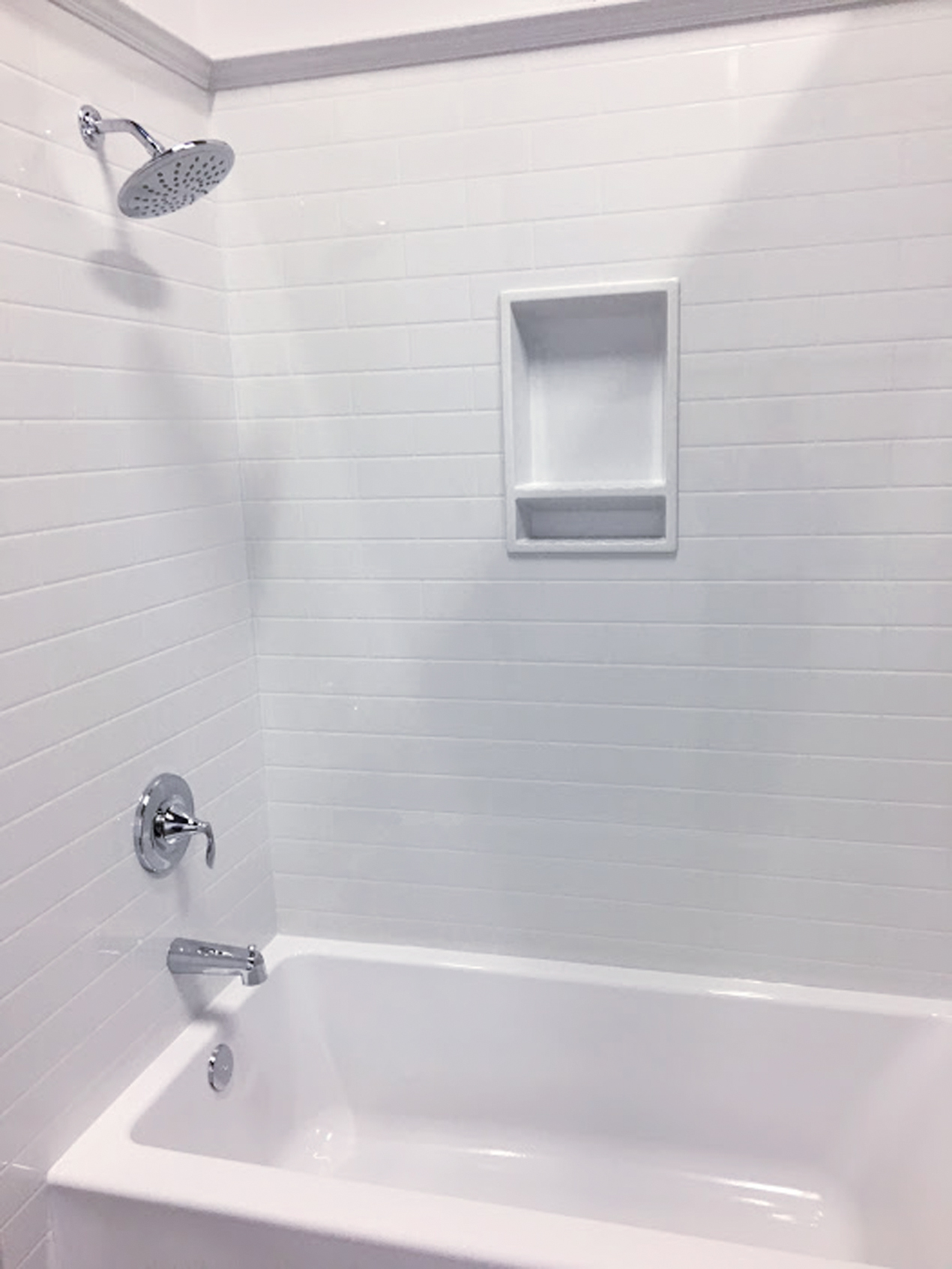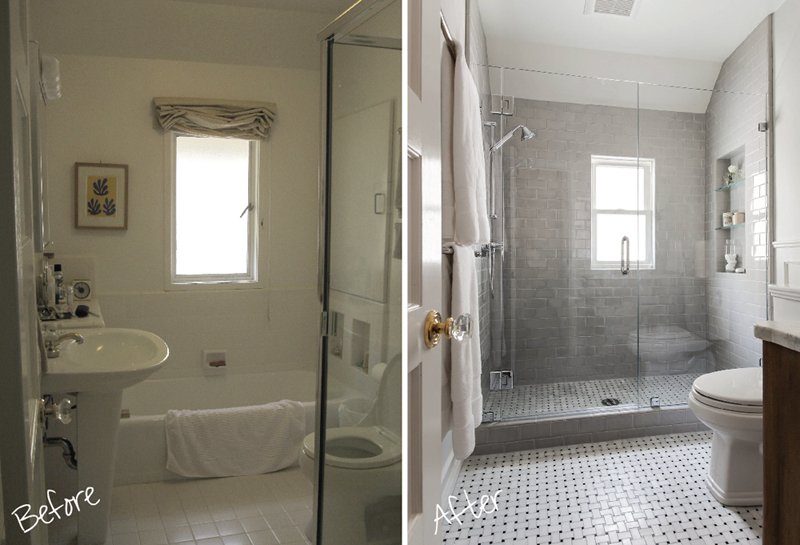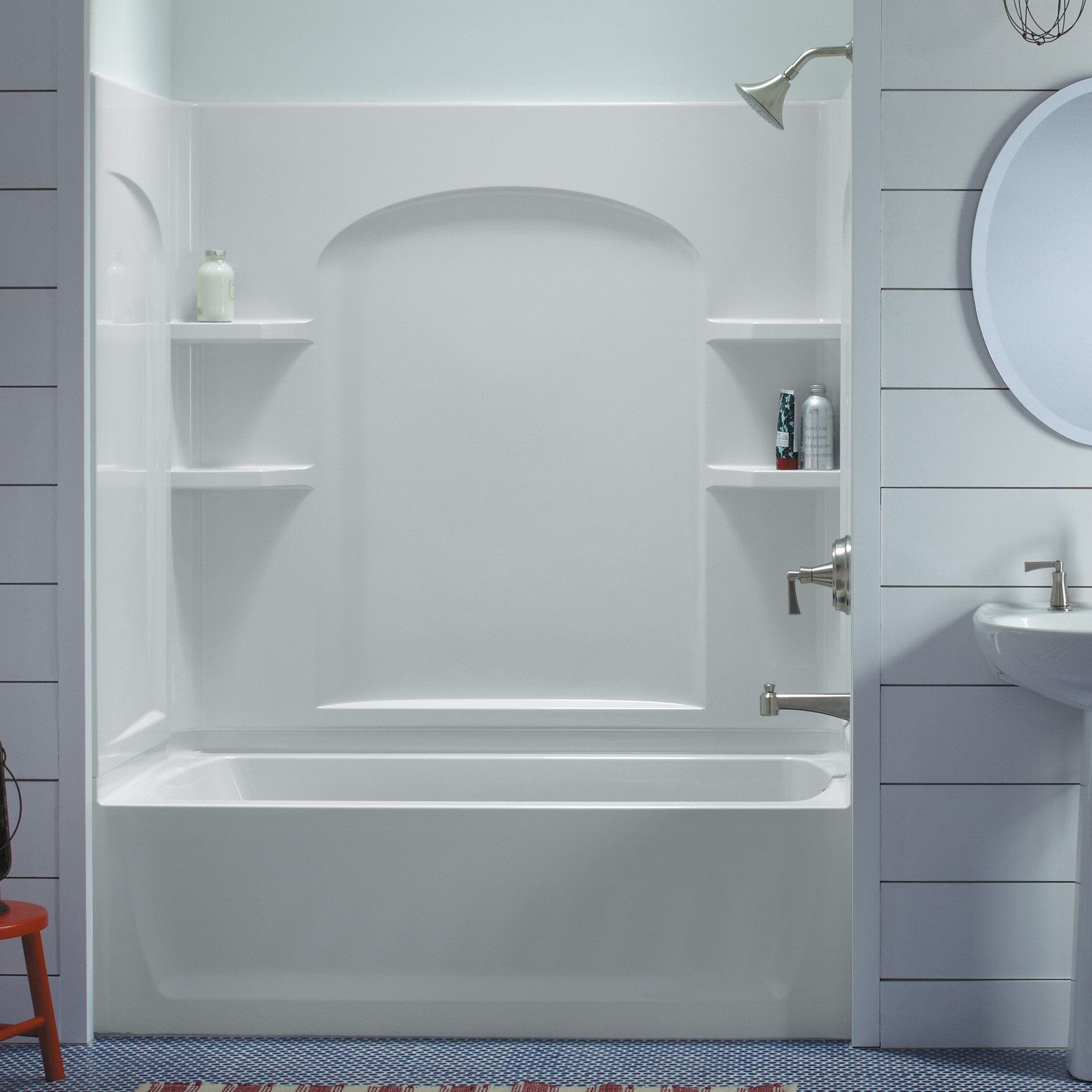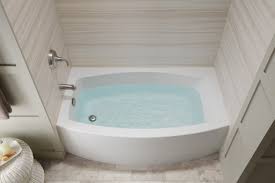
Your bathtub sees more wear and tear than most places in your house. Think of it, between the showers and soaking baths, the walls around your tub get inundated with water at least once a day, and probably more. What is that water doing to the walls around your tub? Probably compromising them.
What you need is a bathtub surround.
What is a bathtub surround?
A bathtub surround is basically a water-tight surface that surrounds your tub. It acts like a vertical bathtub, creating a watertight surface trapping water inside the bathtub areas. It not only looks good, but it’s protecting your walls, too.
If you happen to have simple drywall surrounding your bathtub, you want to seriously consider swapping it for tile or panels made of fiberglass or acrylic. That porous drywall is soaking up water and may be causing structural damage. It’s best to seal up that wall with a non-porous layer to keep the water at bay.
What are tub surrounds made of?
Bathtub surrounds are made of many different substances, providing you with a variety of designs to suit your needs. Surrounds are mounted on studs over your drywall to provide a watertight surface around your tub.
- Acrylic: This low-cost option can include features such as tile patterns, molded shelves and soap dishes. The cheapest ones tend to be a bit flimsy, so make sure you spend a little more money for a thicker, more durable product. These tend to run from $55 to $300.
- Fiberglass and composites: For a little more money, you can get a stronger, more chip-resistant fiberglass unit. Composite tub surrounds are the strongest and have a longer lifespan than acrylic surrounds. These tend to cost about $300 to $600.
- Premium Composite and Solid Surface: These are the Rolls Royce of bathtub surrounds. For $600 to $1,200, premium composite bathtub and surround combinations offer caulkless eams and more realistic tile and texture patterns. Solid surface panels offer a wide range of styles, including faux granite, quartz, and marble. These tend to last 30 plus years. In fact, some brands include a lifetime warranty!
What are tips for choosing a bathtub surround in Los Angeles?
While it may be tempting to DIY this project, when it comes to home improvement projects involving water, you should definitely hire a contractor. You want to make sure your bathtub surround is correctly mounted and installed to create that watertight seal that is so important in a bathtub. So what should you consider in purchasing your bathtub surround?
- Measure, measure, measure: Measure your tub. Most tubs are 60 inches long, but how wide is it? Some tubs are 30 inches wide, others 32 inches wide, and so on. You need to pick a surround kit that is the right fit for your tub. People usually buy a tub and surround at the same time, but you don’t have to if you do your research. You can find a surround that will fit your existing tub.
- Consider color: Do you want to match the color of your bathtub? Do you want to go with an accent color instead? Most bathrooms have matching colors for the sink, toilet and bathtub so all the fixtures have the same look and finish. You may want to make sure your surround matches those colors to have a more harmonious look. Also, if you choose a different color for your surround, it tends to accentuate the age differences in the fixtures.
- Installation: What kind of installation will have to be done? Thicker, sturdier tub surrounds are usually attached directly to studs. This means you have to remove the drywall around the tub so the panels can be screwed directly to the studs. Other tub surrounds can be clued right to the wallboard. These thin types are the most adjustable in length and width.
- Windows: If you have a window in your bathtub area, you will have to make adjustments. After all, you don’t want a tub surround to cover up your window. You’ll have to use thin panels that are relatively easy to cut and trim around a window.
- Faucets: It doesn’t matter which side your tub faucet valve is on. Surrounds are meant to fit around the valve, whether it’s on the left or the right side. Your contractor will simply drill holes in the surround to fit your valve and tub spout.
Can’t I just DIY a tub surround?
Of course, installing a tub surround yourself would be cheaper than hiring a professional, but if you do it yourself, you are not benefitting from the experience and knowledge of a professional contractor. Contractors can help with size issues or material difficulties as they arise, such as something not fitting properly or if you want custom work done. Many factory surrounds are pretty bare. You’ll want a professional on hand to add additional shelves to make your surround not only beautiful, but functional, as well.
Looking for a free estimate for your project? Call Los Angeles Bathroom Remodel today at (323) 402-6381.



